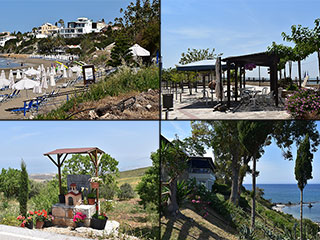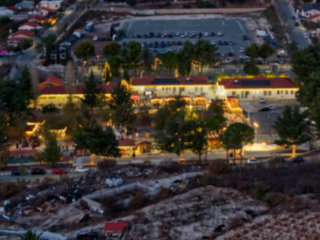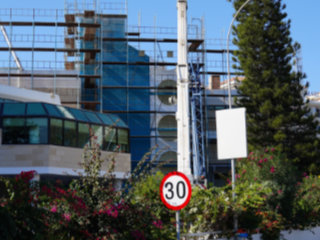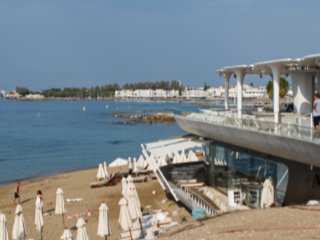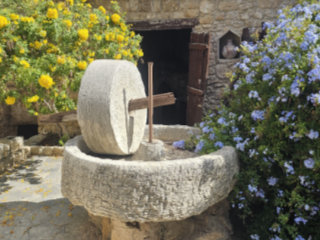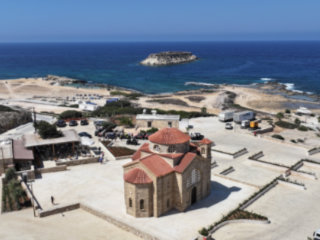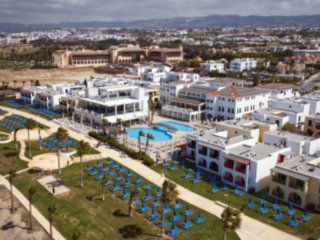Palaipafos Archaeological Park
Before Paphos was at its current location it was sited where you will now find Kouklia. Indeed, there are probably remains bigger than the main Paphos Archaeological Park under the fields in the surrounding countryside, waiting to be discovered. If you would like to see what they have already found, you should take a trip to Palaipafos.
Enter Here
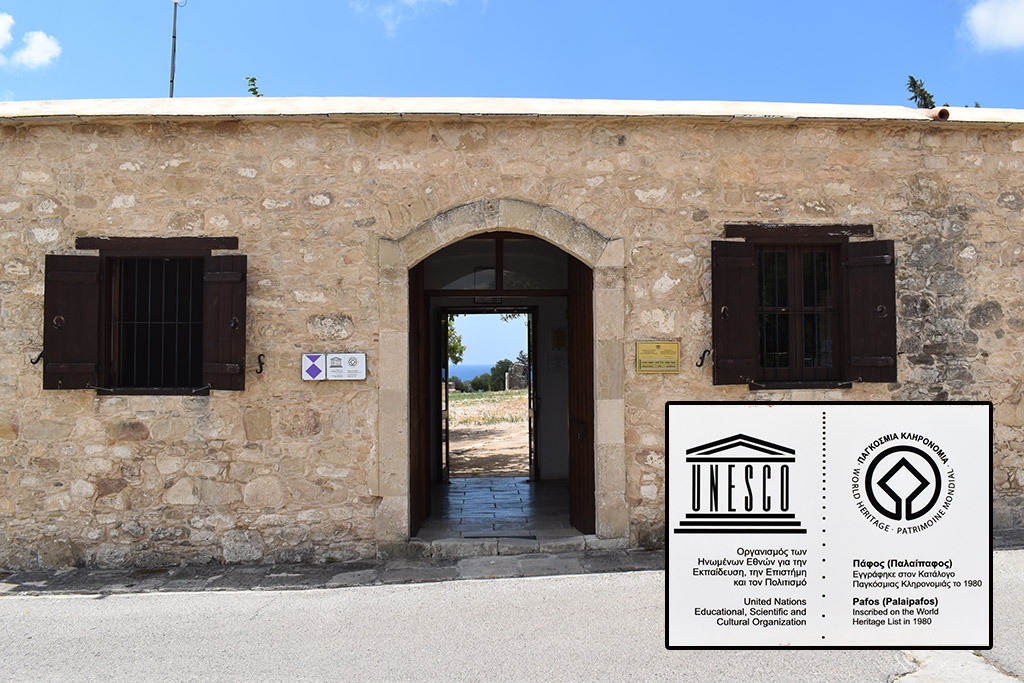
To get to the park just head to Kouklia. From there it is clearly signposted, and you will soon find yourself standing here. It costs €4.50 to enter which is the same as Paphos Archaeological Park. You might think that is a bit of a swizz, given how much bigger the other place is. However, it is still only the cost of a drink at a restaurant, so it isn't exactly a rip-off. Stonehenge in the UK is about €25, in comparison.
There are a number of signs in the ticket office, and I will repeat them here as they give useful information.
Palaepaphos was inhabited in the Chalcolithic period around 3900 B.C. The city owes its later development to the worship of Aphrodite, who according to mythology emerged from the foam of the sea nearby at Petra tou Romiou. The first monumental sanctuary dedicated to Aphrodite may be dated to the Late Bronze Age. Both the architecture and finds from this period prove the affluence of the city.
The most important building is the Sanctuary of Aphrodite, the present ruins of which are mainly Roman; very few remains are preserved from the prehistoric period. The multitude of worshippers and their offerings to the Goddess provide evidence for the reputation of the Sanctuary. The magnificence of Palaepaphos was lost when its last king, Nikokles, moved the capital of the island to Nea Paphos. The worship of Aphrodite, however, continued at the Sanctuary. It was rebuilt in the Roman period, along the lines of the earlier Sanctuary, and survived until the 4th century A.D., when the cult was abandoned.
On The Inside
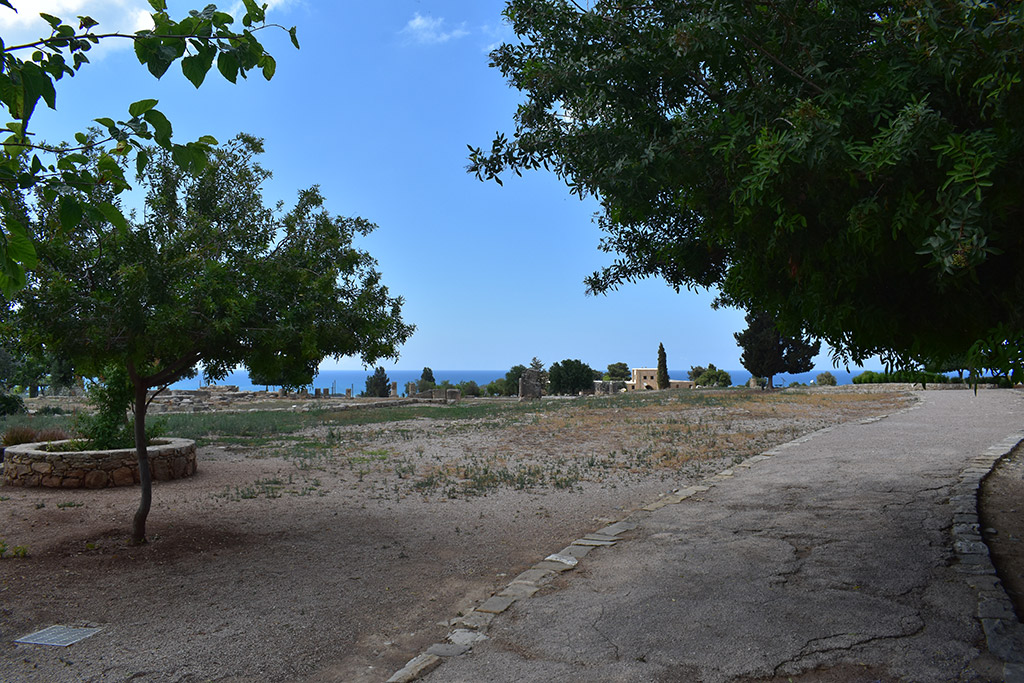
On passing through the ticket office, you are presented with a clear area with the occasional ruin. A path runs through the garden, so let's follow it.
Palaepaphos became the centre of the KOINO KYPRION, an organisation that dealt with religious issues, worship of the Roman emperor and control of the coinage of the island. In the Buzantine era it continued as an important centre. The toponym Couvoucle, from which the modern name Kouklia derices, first appears in the Frankish period. During this period, a sugar production factory and to its west a large administrative centre for the control of the sugar production in the area, were built. This structure houses the local museum today. In the 6th century, the church of Panagia Katholik was built on the east of the sanctuary of Aphrodite and decorated with rich mural decorations.
Distant Building
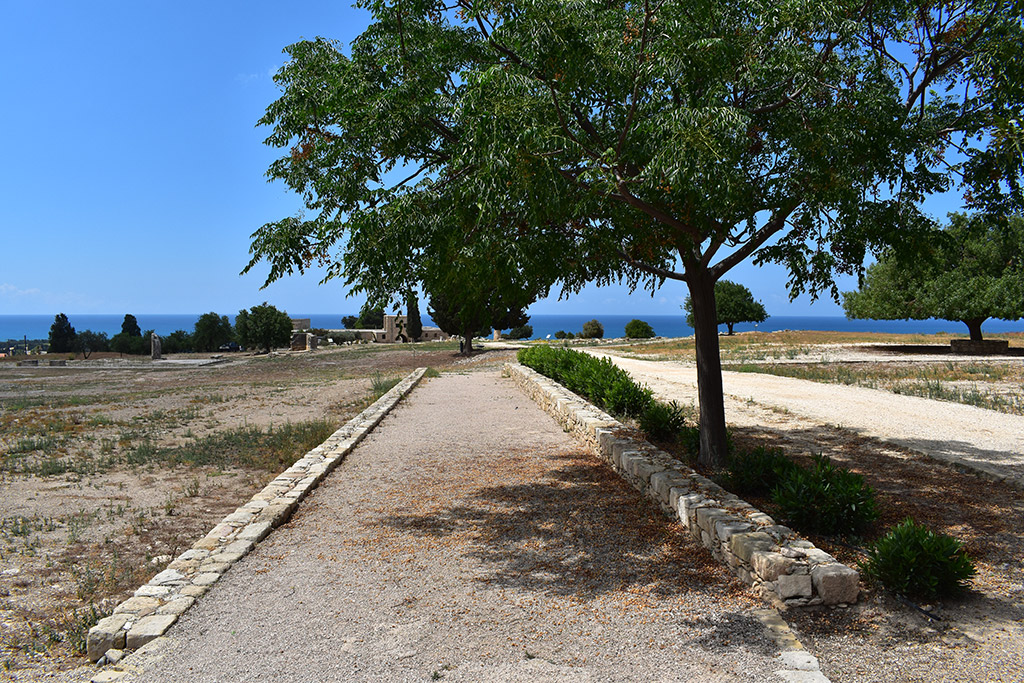
There is a large building at the far end of the park. Prior to that are a number of different ruins.
The rich cemeteries of Palaepaphos are the most important source of information both for the Late Bronze Age and the Early Iron Age. In spite of its importance in these periods, it is only mentioned for the first time in historical documents by Herodotus, in his descriptions of the revolt of the Cypriots against the Persians (499 B.C.)
The modern village was built above the ancient settlement. As a result, the archaeological investigation focused mainly on the Sanctuary of Aphrodite. The most important monuments that were discovered are the Northeast Gate of the Archaic and Classical city walls, the Roman houses, the "House of Leda", an olive press of Roman date at the locality Styllarka and a medieval sugar production factory at the locality Stavros.
Sugar Cane and Sugar Production Installations
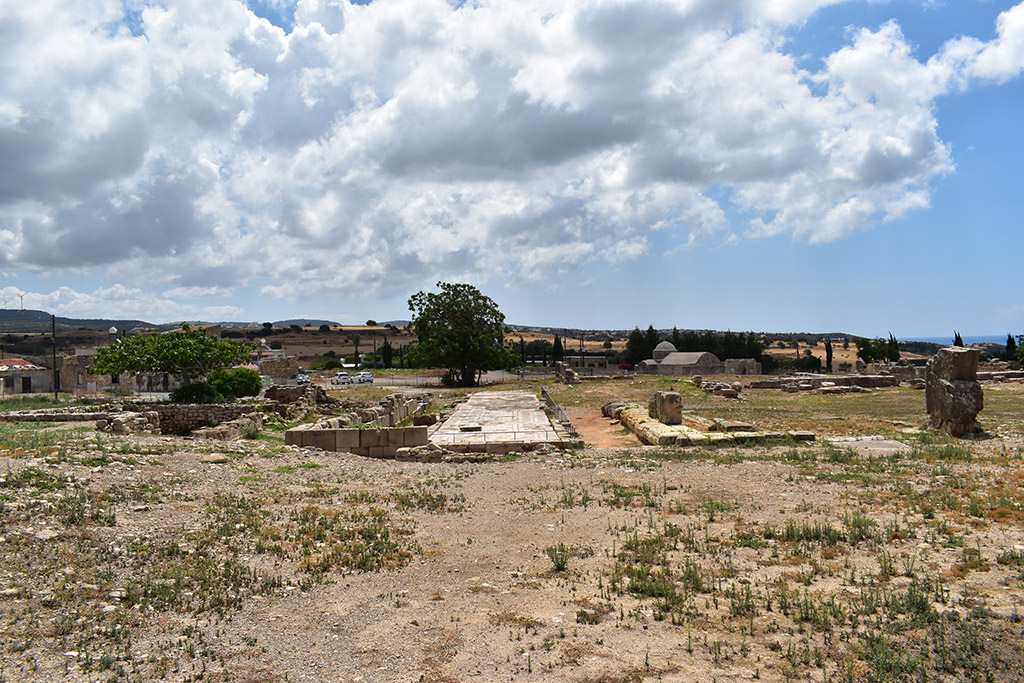
On your left you will see various foundations, as well as a useful sign.
Sugarcane and sugar production installations
The sanctuary of the Roman period is one of the most renowned sanctuaries of the Roman world.
It was constructed along the lines of its predecessor and consiste of a temple in which the ceremonial installations and the votive offerings were placed. A monumental entrance was built on the east side, while on the north and south sides there were two large structures with elaborate decoration where gatherings and banquets of religious nature were held.
During the Medieval period, sugar production installations were constructed on the ruins of the ancient sanctuary that caused great destruction to the earlier buildings. To the south of the sanctuary, a large administrative centre was built for the control of the sugar production in the region. The Local Palaepaphos Museum is housed in this building.
Welcome Shade
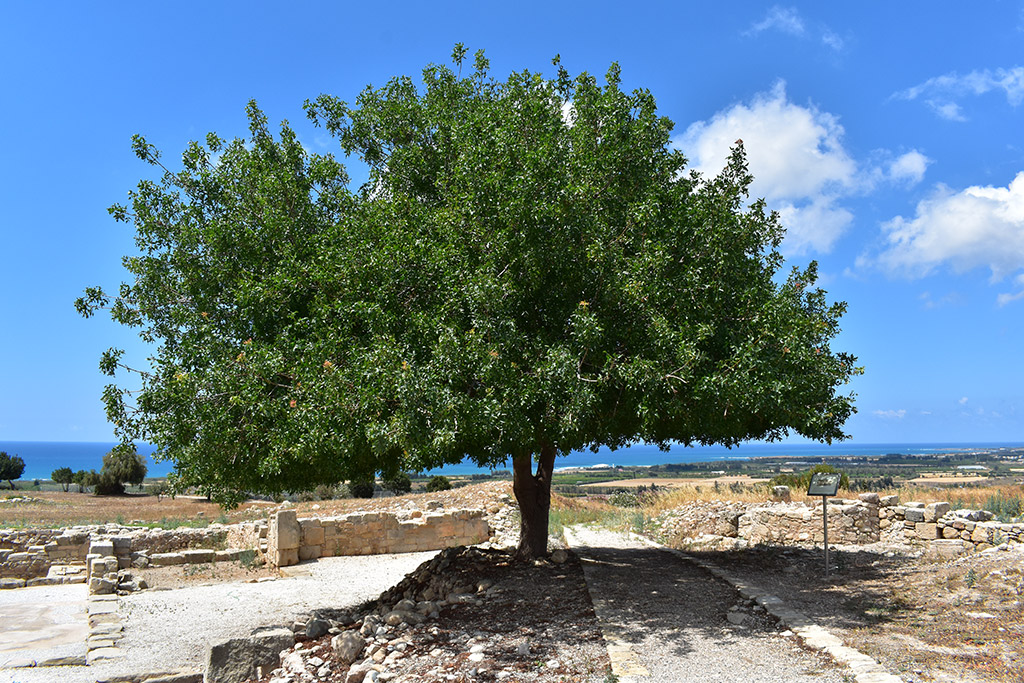
Whereas on the right, you will see a couple of interesting looking structures, and a handy tree providing shade.
Page 1 of 5

Related Blogs:
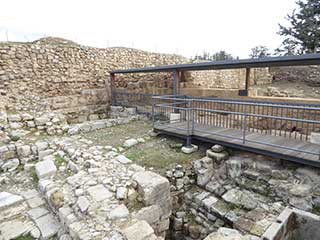
The Ancient Sugar Factory At Kouklia
As you drive along the A6 from Paphos to Limassol, you will pass the Asprokemmos Dam on your left. Just after that you will see some old ruins. This is the site of an ancient sugar factory.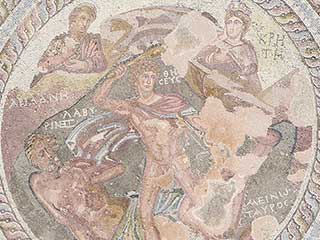
Paphos Archaeological Park
When relatives visited us a few weeks ago, we took them to some of the local tourist must-see sites. A definite highpoint was the visit to the Archaeological Park. We were especially lucky because it was spring time and all the wild flowers were in bloom...Good Pages To Visit
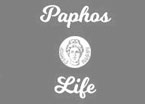
FB PagePaphos Life on Facebook
Like us on Facebook and stay notified of new blog posts.

FB PageOur Facebook Chat Group
Paphos Chat has been created for people who like our site and want to chat using Facebook. You can also easily upload photos of any size here. A lot of people are members of the Facebook chat group and the main forum. It's entirely up to you.
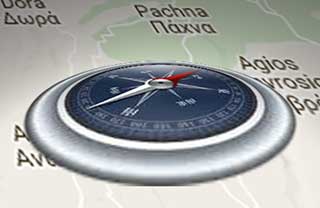
ListBlog Locations
Planning a day out? Then use our map of blog locations as a handy guide. Some of the places we visit our closer to each other than you might think, so take a look and start planning your next adventure...
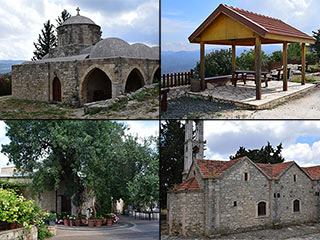
eBookCyprus Road Trip 01: the Kathikas - Panagia Loop
Let me take you on a journey around the region of Paphos, Cyprus. Starting at Paphos itself, we travel to Akoursos, then Kathikas, Kritou Terra and Simou. We continue past Lasa and Kannaviou, before taking in the delights of Panagia. Getting a bit more adventurous, we visit the abandoned villages of Statos and Agios Fotios, before passing through Choulou, Letymbou and Polemi, and rejoining the main Paphos - Polis road.
The route is suitable for all types of vehicle, and requires no off-roading. The guide contains about 130 photographs including shots of all the road signs you need to pay attention to, as well as some of the highlights you may experience along the way.
There are also several maps which will help you keep your bearings.
You can do this journey in a day, or you can break it up into chunks. You can also do it in reverse, to get some completely different views. It is entirely up to you.
